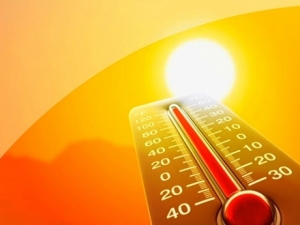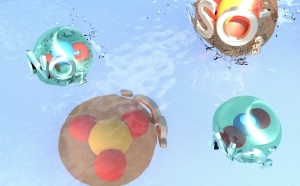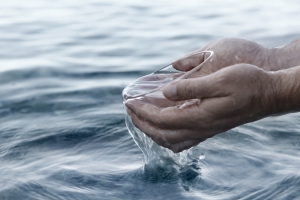LAB REPORT
Science and Technology Making Headlines
Sept. 8, 2017


Lawrence Livermore climate scientist Mark Zelinka was named one of Diablo Magazine’s “40 under 40.”
Under 40 and thriving
Diablo Magazine recently published its “40 Under 40” article about 40 movers and shakers who are making a name for themselves before reaching the age of 40 — and show no signs of slowing down.
At 34, Lawrence Livermore climate scientist Mark Zelinka made the list. As an award-winning research scientist at Lawrence Livermore focusing on the causes and reactions of climate change, Zelinka tackles one of the largest and most misunderstood issues in the world right now.
Zelinka hopes to achieve a breakthrough in the understanding of Earth’s climate by the time he’s 40 — or at least mentor someone who does.


Lawrence Livermore researchers used a biomimicry concept using a moth’s eye to reduce reflectivity of devices like solar cells, glasses and cameras.
A moth’s point of view
In an effort to mimic nature, Lawrence Livermore researchers have turned to a moth’s eye to make a more efficient solar cell.
The technology is based on a biomimicry concept that duplicates the hierarchical structure of a moth’s eye, which is known for superb navigation in darkness through its excellent absorption of light. The team incorporated layers of micro- and nanostructures on silicon’s surfaces, resulting in a reduction in reflectivity by 1 percent to 2 percent, regardless of incident light’s angle.
The researchers claim they have been able to lower the reflectivity of silicon optics to as little as 1 percent by applying layers of hierarchical micro- and nanometer-length structures to the surface of the devices.

Heat waves and other extreme weather are in part due to a steady warming of the Earth from the burning of fossil fuels.
It’s getting hot in here
With temperatures soaring in the Bay Area in the last week, what role does climate change play in the scenario?
Heat waves, droughts and hurricanes like Harvey, which brought historic floods to Texas in recent days, have always been part of the weather in the United States.
But climate change — the steady warming of the Earth from the burning of fossil fuels, which traps heat in the atmosphere — is making them worse. And brutally hot weather like last weekend’s heat wave is almost certain to become more commonplace in the coming decades.
“This is expected behavior. It’s not some vast scientific surprise,” said Ben Santer, an LLNL climate scientist and member of the National Academy of Sciences. “We know that by burning fossil fuels we are increasing heat-trapping gases in the atmosphere, and that’s warming the lower atmosphere and Earth’s surface. The expectation has been that we are going to see more heat records, and that’s what we are seeing.”


This artist's impression shows various solvated ions in liquid water. Image courtesy of Nicholas Brawan/Institute for Molecular Engineering, University of Chicago and Tuan Anh Pham/LLNL
A bundle of energy
Liquid electrolytes are essential components in a variety of emerging energy technologies, including batteries, supercapacitors and solar-to-fuel devices.
“To predict and optimize the performance of these devices, a detailed understanding of the electrolytes, particularly their electronic properties such as the ionization potential and electron affinity, is critical,” said Anh Pham, a Lawrence Livermore National Laboratory Lawrence fellow and the lead author of a paper in Science Advances.
As an example, Pham pointed to how proper energy alignment at the electrode-electrolyte interface of photoelectrochemical (PEC) cells is key to achieving efficient hydrogen production.


Lawrence Livermore researchers are using carbon nanotubes to desalinate water.
Quenching the thirst for desalinated water
Researchers at Lawrence Livermore and Northeastern University have found a way to use carbon nanotubes — microscopic tubes, a fraction of the size of a human hair — to filter salt out of water. The new method could provide cheap, drinkable water to people around the world.
Only a fraction of Earth’s water is fit for human consumption; most is full of salt. Current desalination techniques — the process of removing salt from water — are expensive and use too much energy to be done on a large scale. But according to the new study, filtration through carbon nanotubes could be done at scale in a cost-effective way.
Carbon nanotubes can be made narrow enough to allow only one water molecule through at a time, a process that would help break the bonds between water and salt. The nanotubes are negatively charged, which causes them to reject other negatively charged particles, like salt. The combination of these two processes — filtration and negative charge — enables quick, inexpensive filtration.





